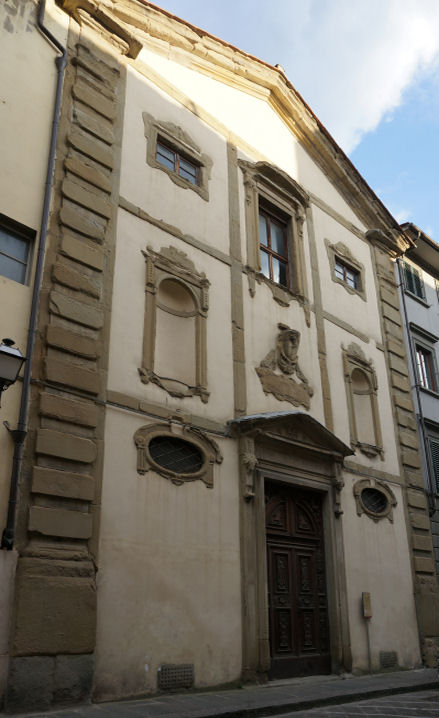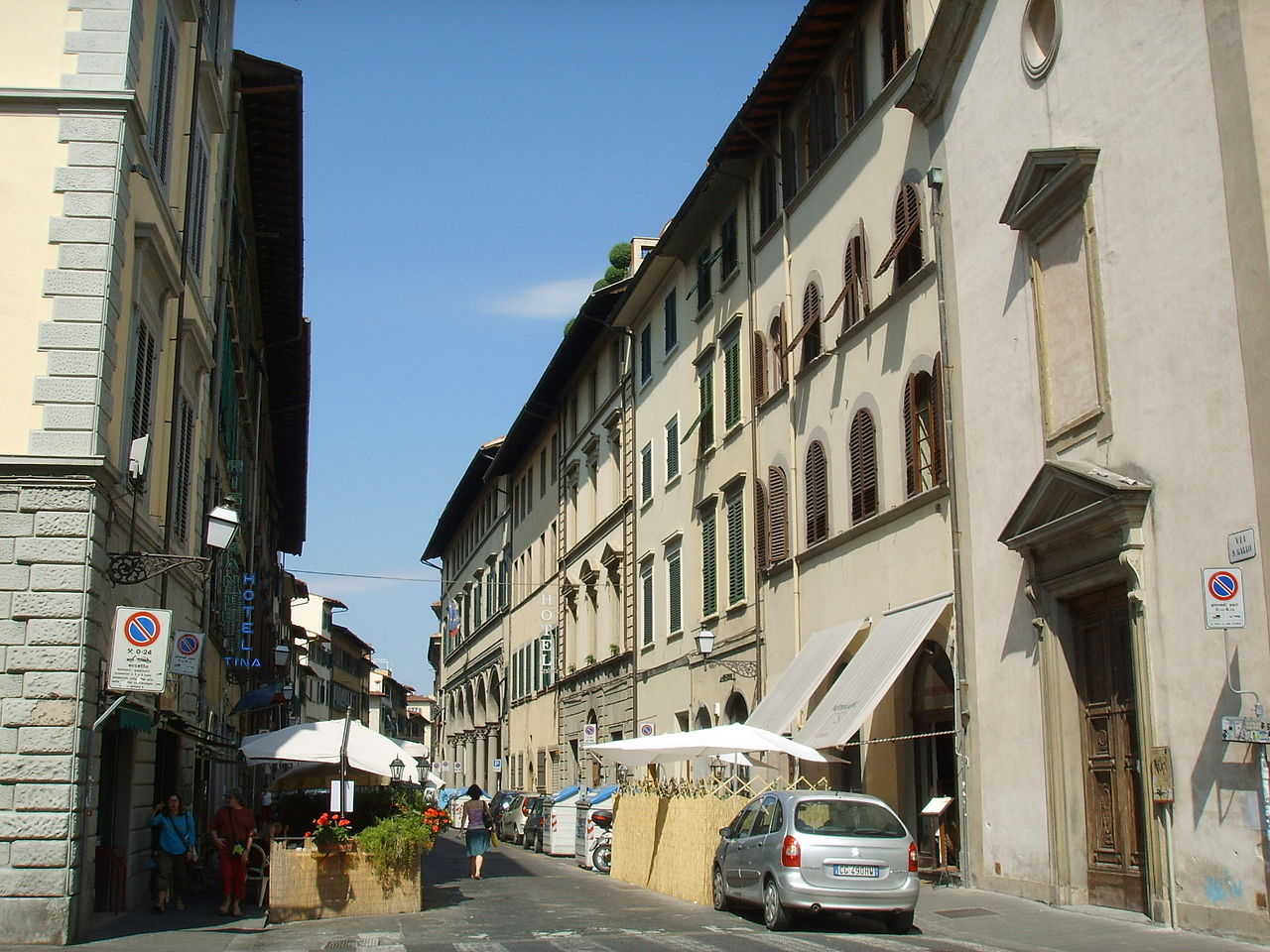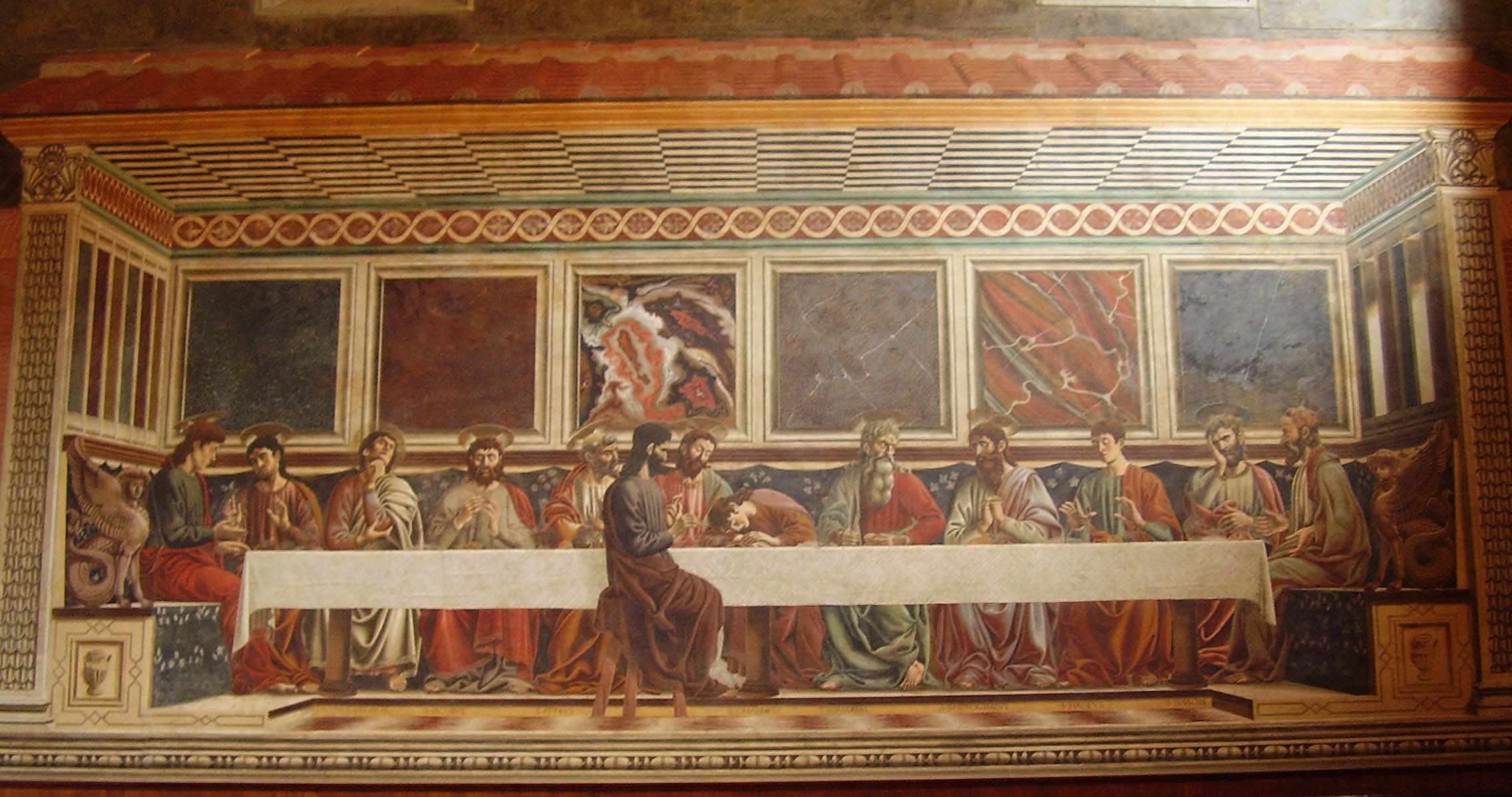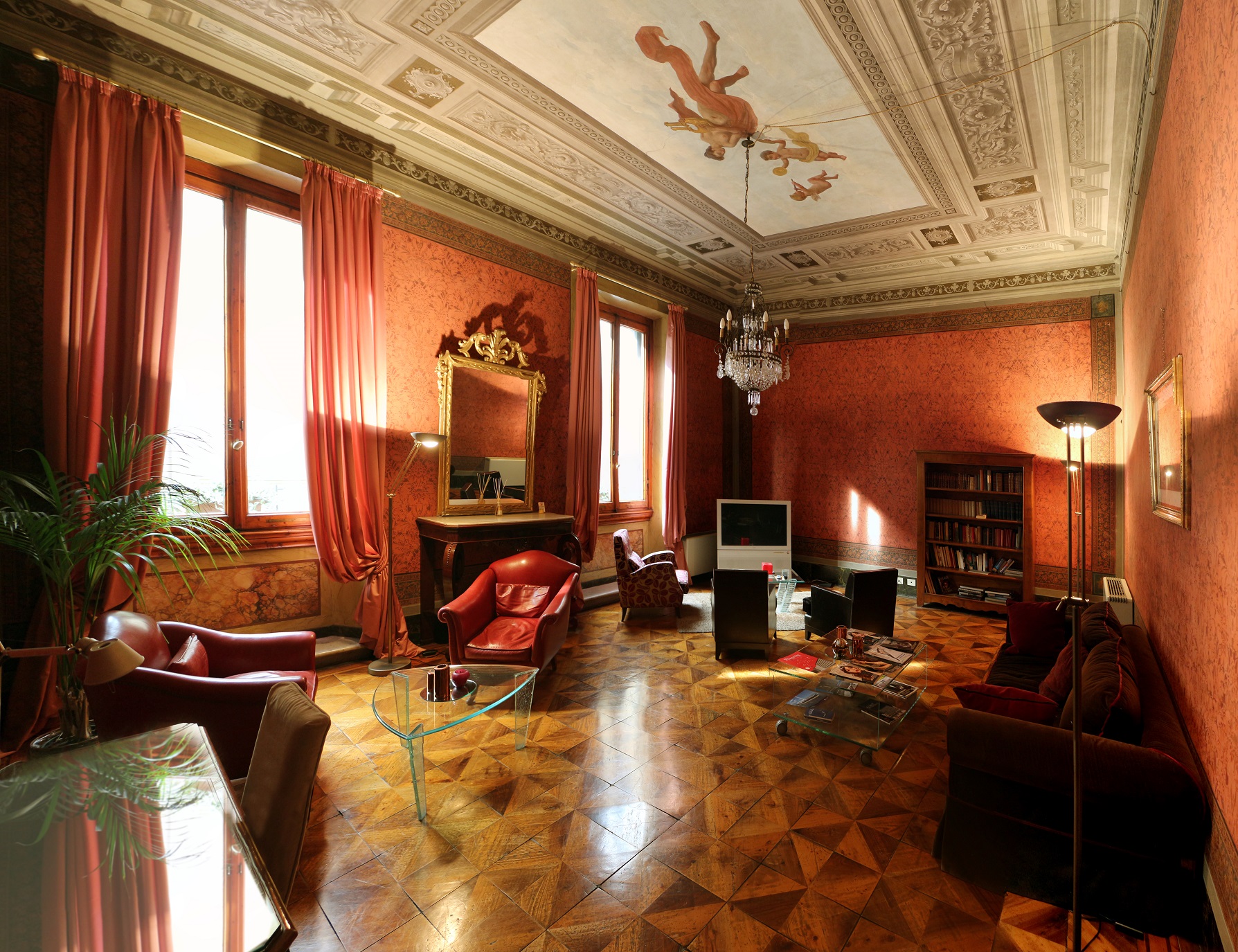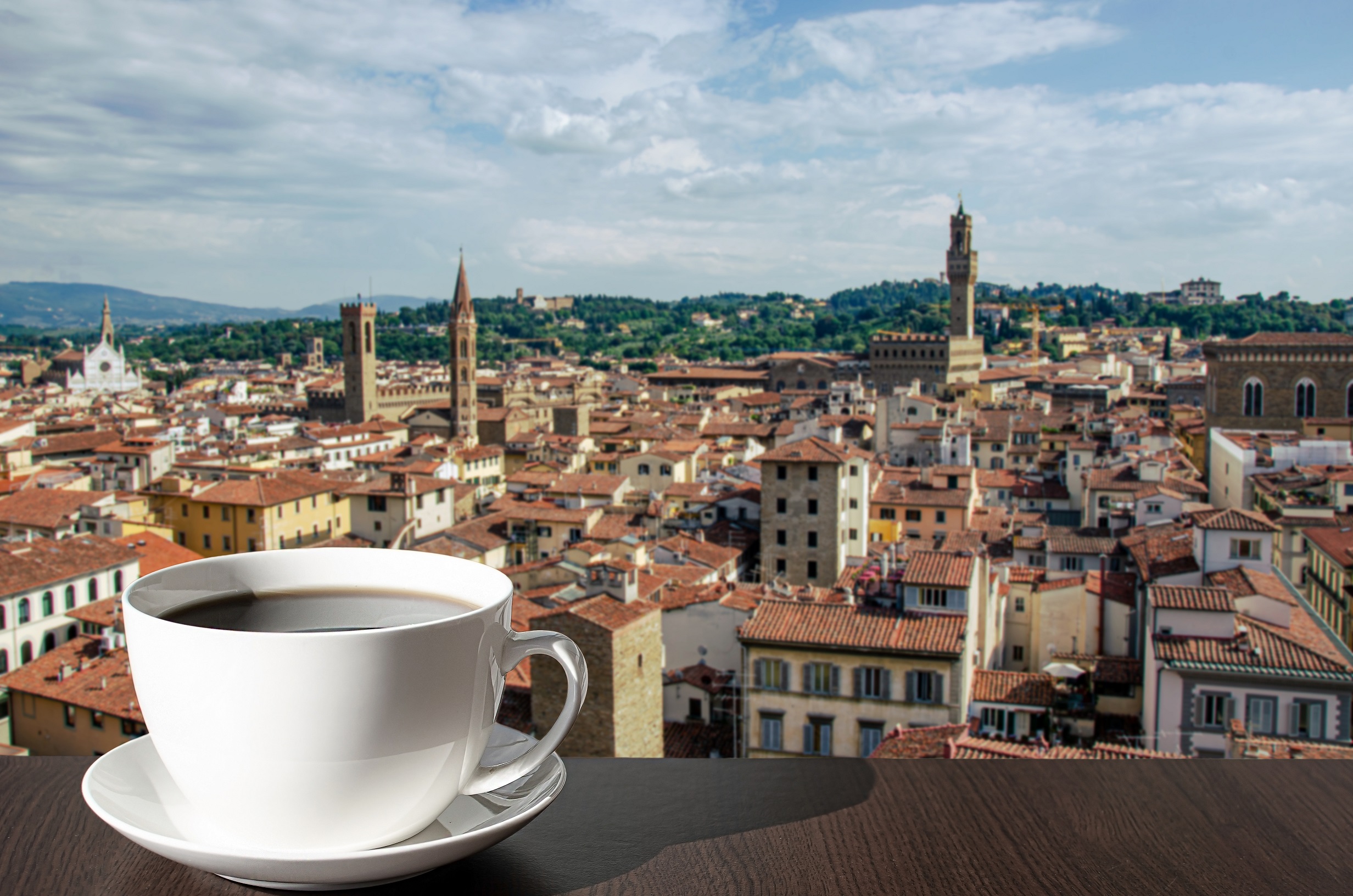Once, I walked along the Via San Gallo in Florence, a street I have come to know well. For more times than I can count, I have passed the façade of what appears to be a church and, until that moment, paid little attention. A small metal marker on a pole near the gated entrance to the building piqued my interest.
The history of the structure is fascinating; the building has gone through several changes over the centuries. From 1211 to 1286, the nuns of Sant’Agata occupied the convent. In 1289, the nuns of Bibbiena, refugees from the forested hills east of Florence, moved to the convent. They remained there until 1780 when nuns of the Order of the Montelave assumed responsibility for the convent. After the Napoleonic suppressions in the early 19th Century, the military converted the complex to a hospital. The structure is not open to the public.
Within the church, one will find frescoes of The Martyrdom of Saint Agatha and Her Burial by Giovanni Bizzelli, a pupil of Allori. The church also reportedly contains paintings by Neri di Bicci, Lorenzo di Credi, and Lorenzo Lippi. Depending on the source of information you seek, you will find some believe the paintings are still within the structure, but others think the paintings were long removed.
The church faces the Via San Gallo, one of my favorite streets in Florence. From the Piazza della Liberta at its northern terminus to the intersection of Via San Gallo and the Via Guelfa to the south, the street transits through the heart of northcentral Florence and, in doing so, transits much of the city’s history.
Just off the corner of the Via Guelfa and Via Ventisette Aprile lies the Convent of Sant’Appolonia, one of the most important early convents of the city. Andrea del Castagna painted the fresco of the Last Supper in the refectory of this now deconsecrated structure. Through Castagno’s vision, the entire structure of the Last Supper changed; no longer was Judas included with the disciples on the same side of the table as Christ. He was placed on the side of the table closest to the viewers as a reminder of his actions and as a visible reminder of Christ’s forgiveness.
A bit further north on the eastern side of the street rests one of my favorite hotels in Florence, the Orto de’ Medici. Named after the nearby garden (Orto) established by Cosimo de’ Medici in the 14th Century, a place where he experimented with medicinal plants, the hotel offers lovely rooms, gorgeous public spaces, a fabulous breakfast buffet and exceptional service. The views into the central courtyard of the hotel are imitative of the visions so many of us have of Tuscany: lemon garden, wisteria covered pergola, and a quiet retreat from the city.
A bit further north from the Orto de’ Medici you can find another, smaller boutique B&B I also highly recommend; the Antica Dimora Johlea. Located on the top floor, this lovely place offers small rooms with the feel of a home furnished in period antiques and a gorgeous roof terrace that provides guests with unobstructed views of Brunelleschi’s Dome of the Duomo and beyond to the Hotel di Bellosguardo above the south side of the Arno. This is a wonderful place to enjoy a glass of wine or other refreshment at sunset, or to take in the city at the start of the day as you enjoy breakfast and a cup of Caffe Italiano!
A visit to Florence must include a dinner at Trattoria da Tito, north from the Johlea on Via San Gallo. The family-owned restaurant is a Florentine tradition, and I cannot recommend this fabulous, famous, cacophonous place highly enough for an unforgettable meal. Go early, thirty minutes before opening, or you may have trouble getting a table. To avoid all that hassle, call ahead for a table. This place fills early, and you will want to be sure you can get in!
This street holds many memories. It is a typical avenue in its appearance: cobblestones, narrow walkways, numerous shops, and cafes. It is a city of history and commerce, a place where you will find a warm and welcoming hotel, some fabulous restaurants, and some famous places in which you will create your own evocative memories of la bella citta, Firenze.

